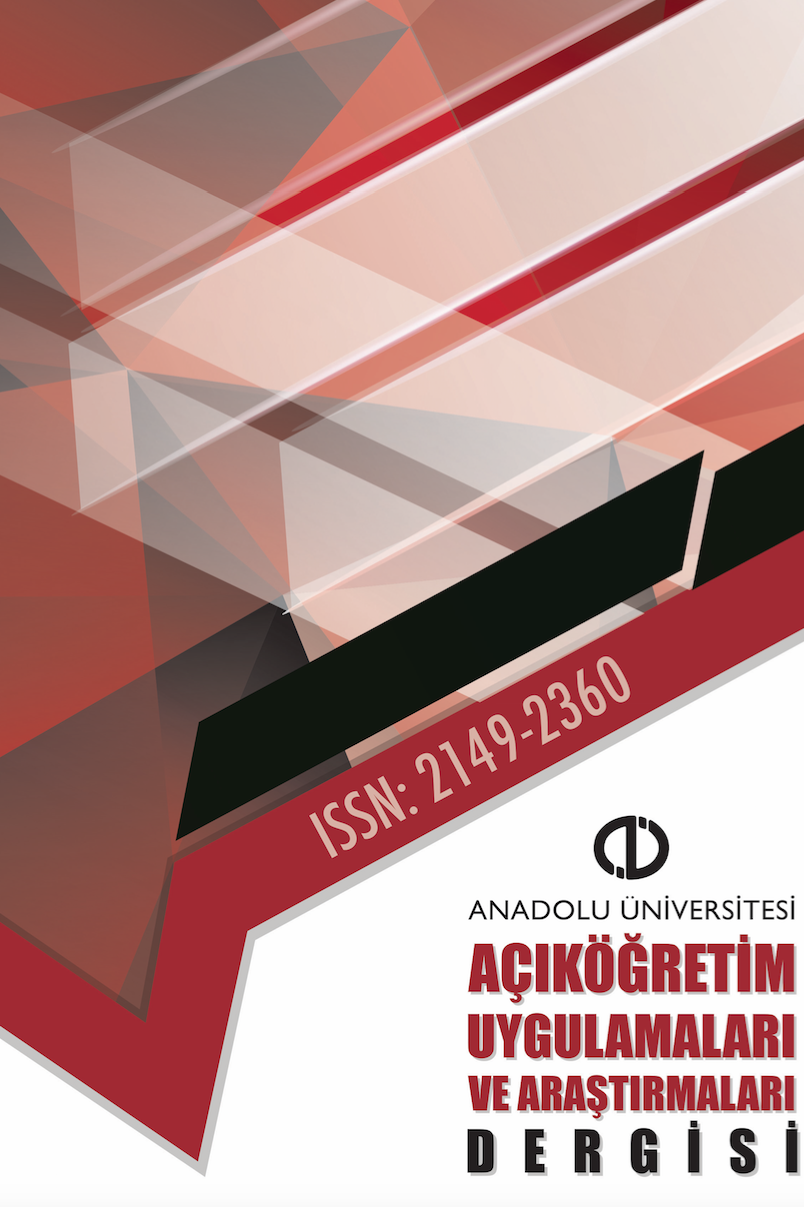Açık ve uzaktan öğrenmede ders tasarımı: bilim etiği dersi örneği
Açık ve Uzaktan Öğrenme, Öğretim Tasarımı, Blackboard, Öğrenme Yönetim Sistemi, Bilim Etiği
-
Open and Distance Learning, Instructional Design, Blackboard, Learning Management System, Science Ethics,
___
- Branch, R. M. (2009). Instructional design: The ADDIE approach. New York, NY: Springer.
- Duran, N., Önal, A., ve Kurtuluş, C. (2006). E- öğrenme ve kurumsal eğitimde yeni yaklaşım öğrenim yönetim sistemleri. Akademik Bilişim Pamukkale Üniversitesi, Denizli.
- Habanek, D. V. (2005). An examination of the integrity of the syllabus. College Teaching, 53(2), 62–64.
- Holmberg, B. (1989). Theory and practice of distance education. London, UK: Routledge.
- Keegan, D. (1996). Foundations of distance education. London, UK: Routledge.
- Moore, M. G., & Kearsley, G. (2005). Distance education: A systems view. Belmont, CA: Wadsworth.
- Özenç Uçak, N., ve Birinci, H. G. (2008). Bilimsel etik ve intihal. Türk Kütüphaneciliği, 22(2), 187-204.
- Rovai, A. P. (2000). Building and sustaining community in asynchronous learning networks. The Internet and Higher Education, 3(4), 285-297.
- Simonson, M., Smaldino, S., Albright, M., & Zvacek, S. (2012). Teaching and learning at a Distance: Foundations of distance education (5th ed.). Boston, MA: Pearson.
- Smith, P. L., & Ragan, T. J. (2005). Instructional design. (3rd ed.). Hoboken, NJ: Wiley.
- Taylor, R. W. (2002). Pros and cons of online learning – a faculty perspective. Journal of European Industrial Training, 26(1), 24-37.
- Wasley, P. (2008). The syllabus becomes a repository of legalese. The Chronicle of Higher Education, 54(27), A1.
- ISSN: 2149-2360
- Yayın Aralığı: Yılda 2 Sayı
- Başlangıç: 2015
- Yayıncı: Anadolu Üniversitesi
Yükseköğretim kurumları web tabanlı uzaktan eğitim programlarında yaşanan sorunlar
Araş. Gör. Dr. Hatice Gökçe BİLGİÇ, Doç. Dr. Hakan TÜZÜN
(Editörden Mektup) Açık ve uzaktan öğrenmede yeni teknolojiler
(Kitap Özeti) Mobil sağlık yeniliği: mobil öncüler için en iyi uygulamalar
Yrd. Doç. Dr. Nilgün Özdamar KESKİN, Araş. Gör. Hakan KILINÇ
Ayşe Peri MUTLU, Doç. Dr. Mehmet Emin MUTLU
(Kitap Özeti) Dünyada kitlesel açık çevrimiçi dersler ve açık eğitim
(Editöre Mektup) Açık ve uzaktan öğrenme ortamlarında öğrenen bölümlendirmesi (segmentasyonu)
Açık ve uzaktan öğrenmede ders tasarımı: bilim etiği dersi örneği
Arş. Gör. Abdulkadir KARADENİZ
Açık ve uzaktan öğretimde ölçme ve değerlendirme politikaları
